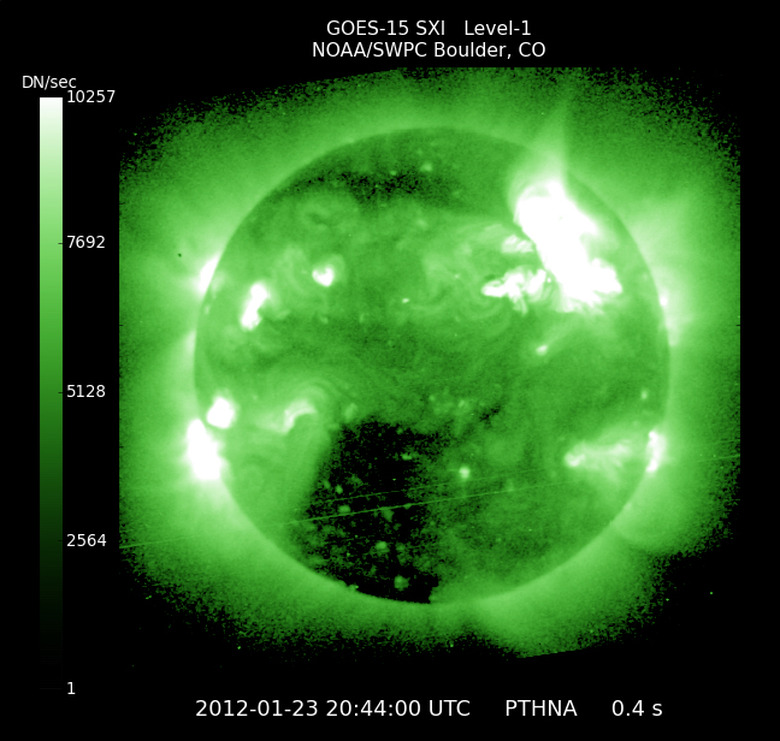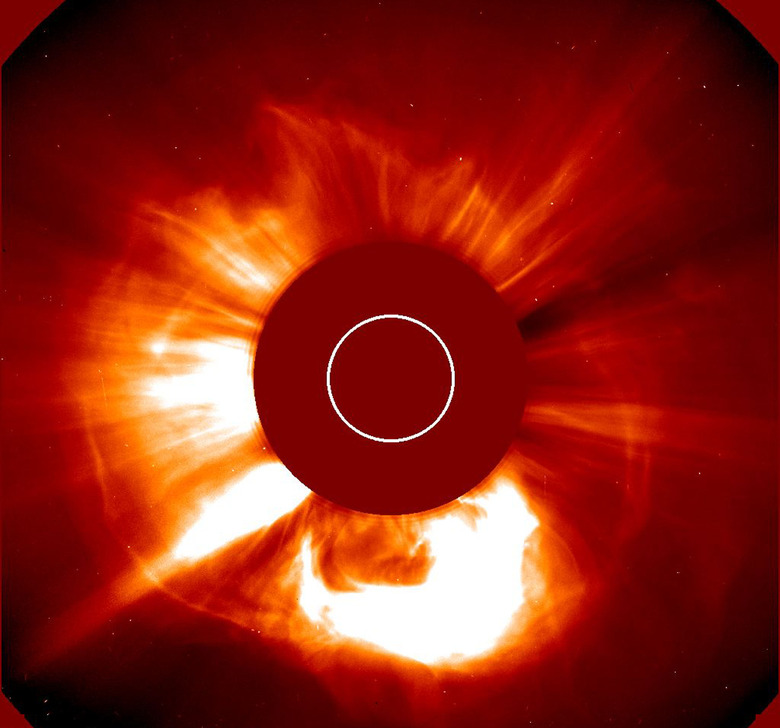How Long For A Solar Flare To Reach Earth?
Solar flares are sudden releases of energy from the surface of the sun. Solar flares release the equivalent energy of millions of hydrogen bombs, all in anywhere from a few seconds to an hour or so. The energy of a flare is primarily released in the form of electromagnetic radiation: in radio waves, visible light, gamma rays and other types of waves. The electromagnetic energy and the energetic particles from a solar flare get sent out into space and can intersect with the Earth.
What They Are
What They Are
The sun is a roughly spherical collection of highly energetic charged particles that swim around in gigantic flowing currents that create a complex magnetic field. The magnetic field, in turn, drives the motion of the charged particles. The result is an intricate dance of energetic particles swirling throughout and above the surface of the sun. When those dancing streams of particles swirl against each other, they trigger a sudden change in the path of the sun's magnetic field. That sudden change releases energy, resulting in a solar flare.
The Energy
The Energy
Most of the energy directly released by a solar flare is in the form of electromagnetic radiation. Solar flares release many forms of electromagnetic energy, including radio waves, ultraviolet light, visible light, infrared radiation, microwaves, x-rays and gamma rays. While these different forms of radiation all have unique characteristics, they share one: their speed. Since the particles all travel at the speed of light — 300,000 kilometers per second — the solar flare energy takes 500 seconds to arrive at Earth — a little more than eight minutes after it leaves the sun.
Other Energy
Other Energy
The solar flare's burst of electromagnetic radiation also sends particles flying. A coronal mass ejection, or CME, is the name given to a big surge of particles emitted from the surface of the sun, and it can sometimes accompany a solar flare. CMEs are pretty rare, but there are almost always smaller amounts of energetic particles that come with a solar flare. The speed of the particles depends on the strength and rapidity of the flare that sends them flying. The highest energy particles from a flare can arrive in as little as two minutes after the electromagnetic radiation, while CMEs take up to three or four days to arrive at Earth.
When to Worry
When to Worry
Even though solar flares are highly energetic, the Earth has built-in protective mechanisms. Most dangerous electromagnetic radiation is absorbed by the atmosphere, and the high-energy particles are trapped and diverted by the Earth's magnetic field. The far northern or southern latitudes are the most susceptible to possible damage, and the last event of any importance was in 1989, when a large solar flare shut down service to 6 million people for up to nine hours in Quebec, Canada. Though rare, a 2010 study by Oak Ridge National Laboratory, "Electromagnetic Pulse: Effects on the U.S. Power Grid," concluded that a major solar event has the potential to damage the electrical grid catastrophically, and made recommendations for "hardening" electrical facilities to withstand a powerful magnetic storm. The National Association of Regulatory Utility Commissioners, in a 2011 report, said models predict a 50 percent chance that a catastrophically large solar flare would occur "within several decades."
Cite This Article
MLA
Gaughan, Richard. "How Long For A Solar Flare To Reach Earth?" sciencing.com, https://www.sciencing.com/long-solar-flare-reach-earth-3732/. 24 April 2017.
APA
Gaughan, Richard. (2017, April 24). How Long For A Solar Flare To Reach Earth?. sciencing.com. Retrieved from https://www.sciencing.com/long-solar-flare-reach-earth-3732/
Chicago
Gaughan, Richard. How Long For A Solar Flare To Reach Earth? last modified March 24, 2022. https://www.sciencing.com/long-solar-flare-reach-earth-3732/

